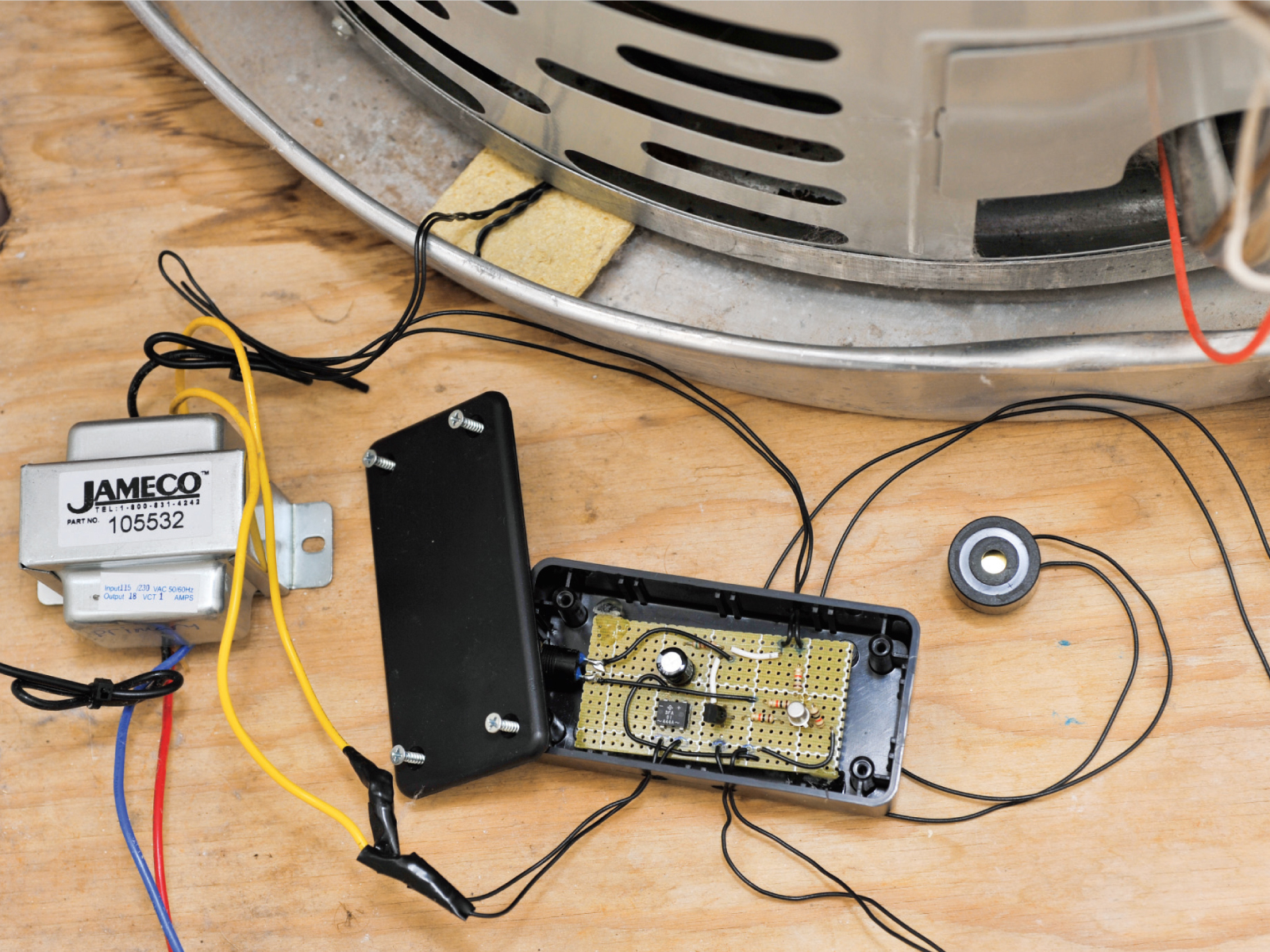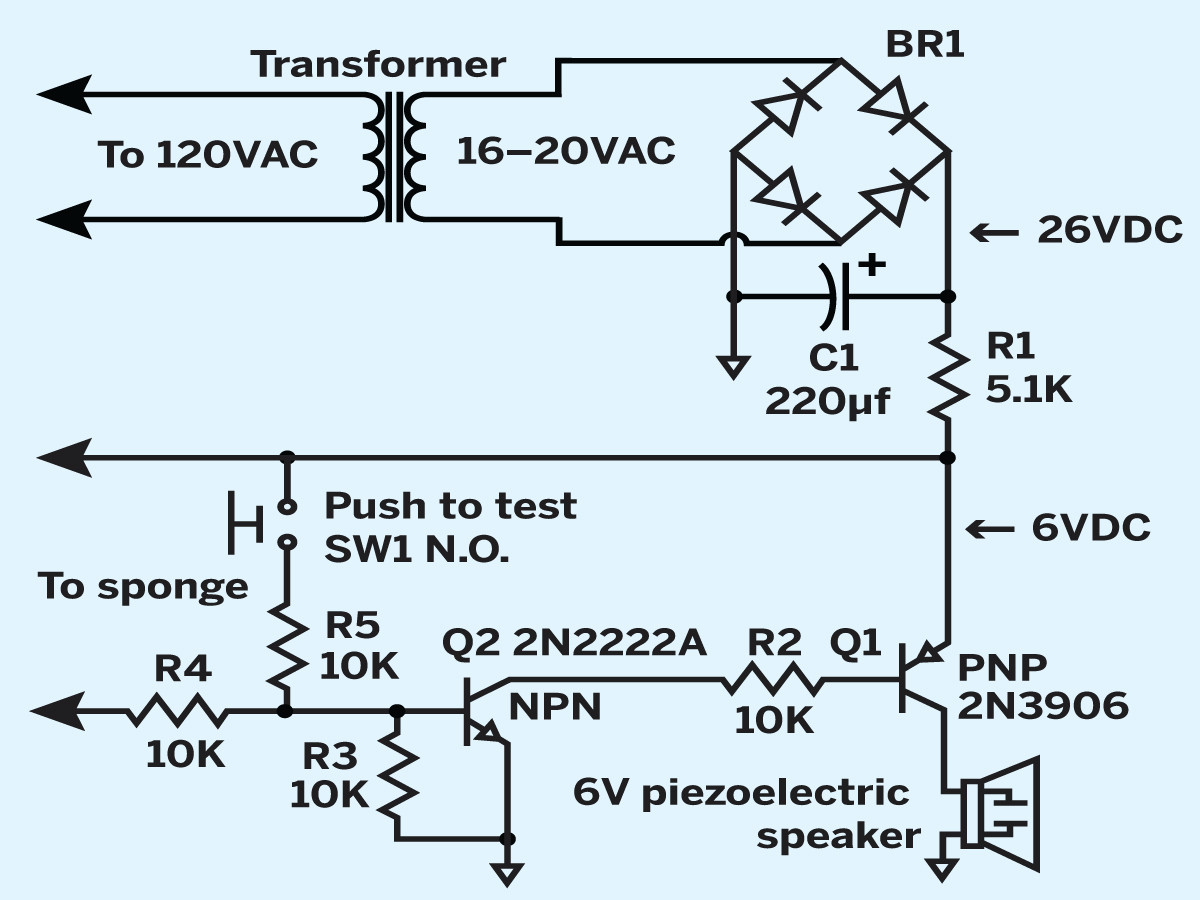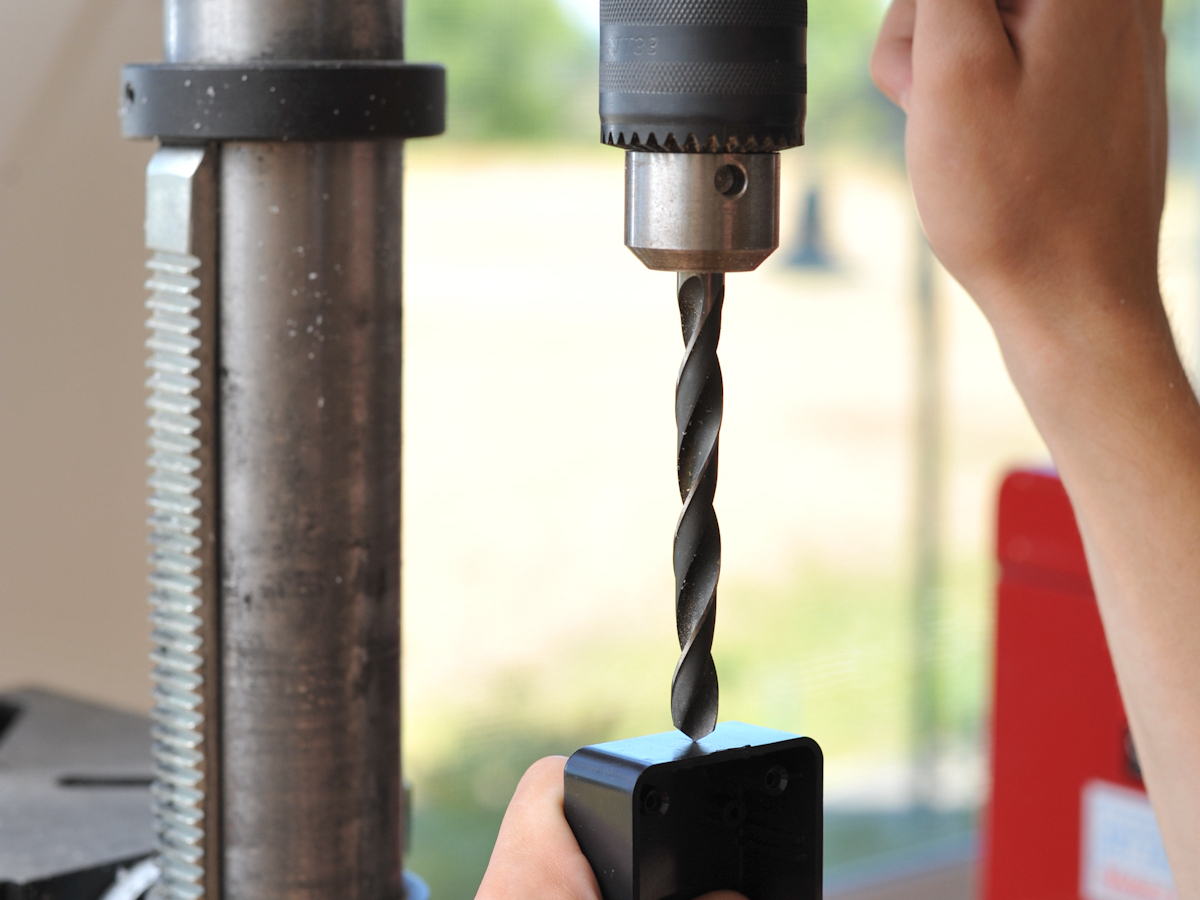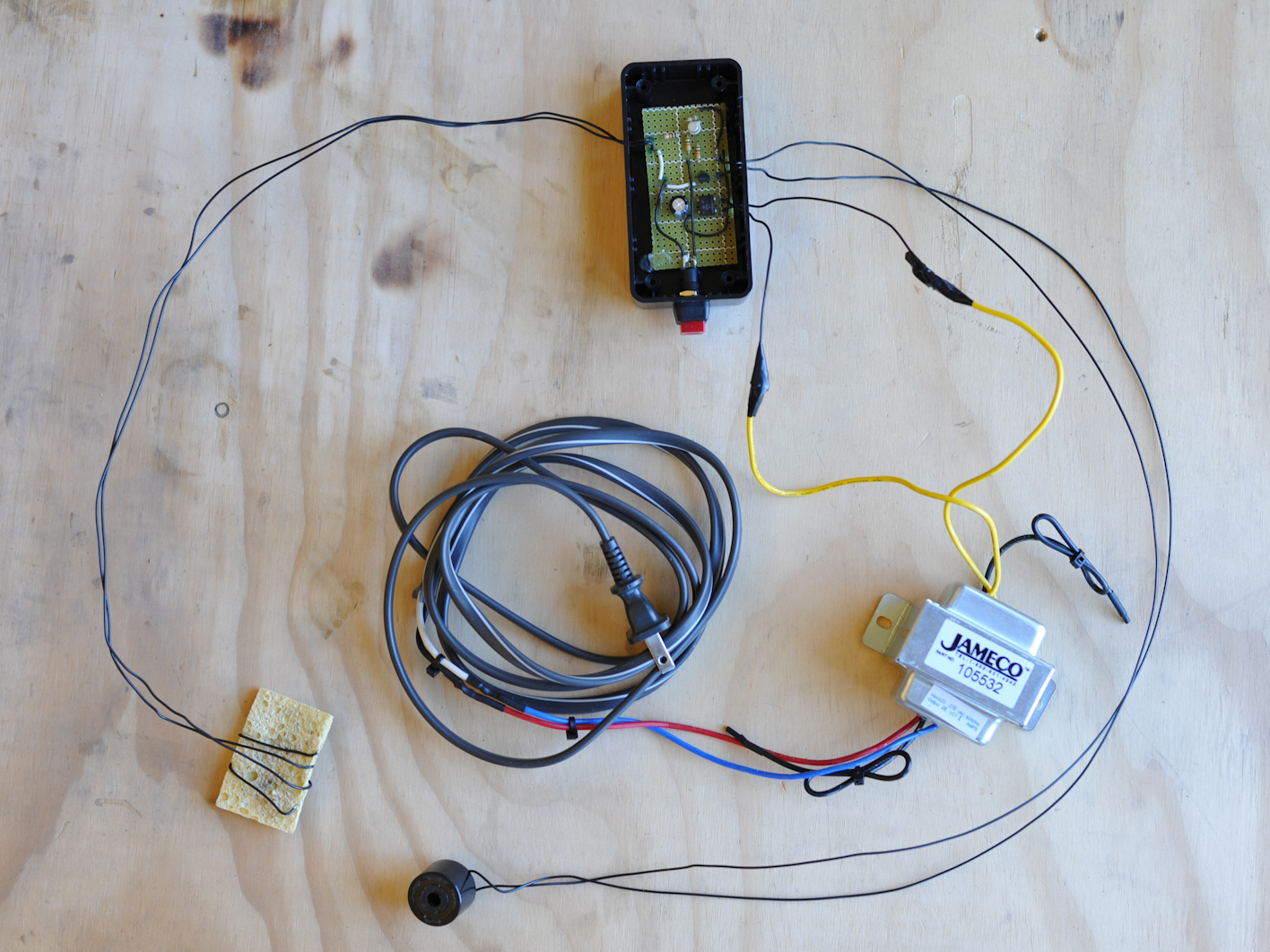The average life expectancy of a hot water heater is about 10 years, so it’s not a question of if it will leak — it’s simply a matter of when. In my part of the country, homebuilders have been installing these tanks in the attic. This saves space, but also means that if you don’t go upstairs very often, you may not realize that your heater is leaking until it has caused hundreds of dollars of damage to your ceilings and walls. Yes, new building codes mandate a drain pan, but these can clog or corrode.
I realized that my two water heaters were 10 years old and started researching water leak detection systems. I soon realized that I could make a system that would work just as well for much less money. Here’s a leak detector circuit I designed that costs less than $25 and draws power from my doorbell transformer. This works nicely because the transformer is already installed in the attic and it’s on 24/7. You can also use a dedicated transformer.
Does this leak detector work? The answer is a big yes. Just a few weeks after I installed it, I came home from work and heard it buzzing. Upon investigation, I discovered that my primary water heater was leaking, and that its drain pan was clogged and already half full. My little circuit had saved the day.












